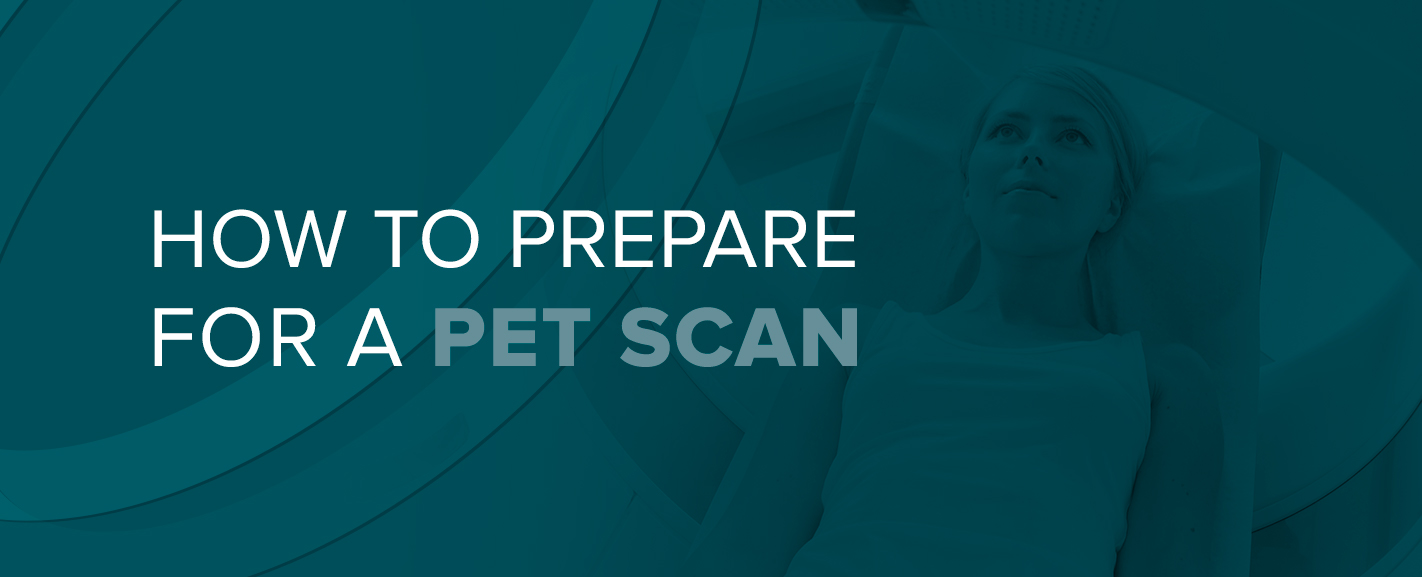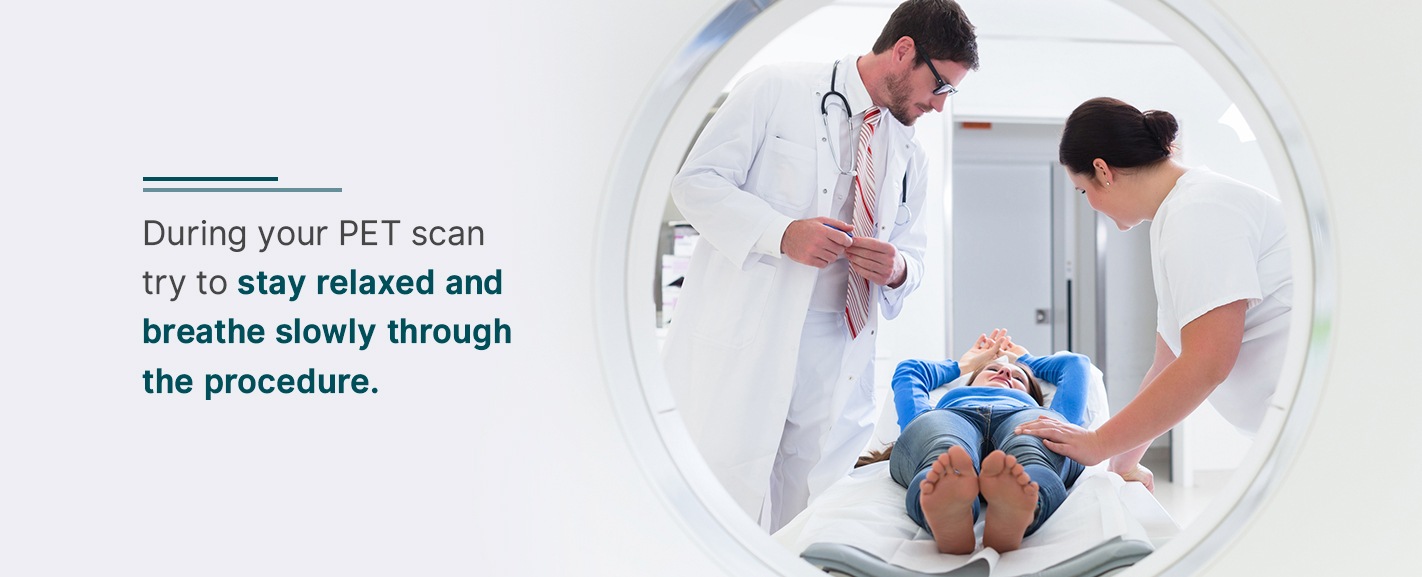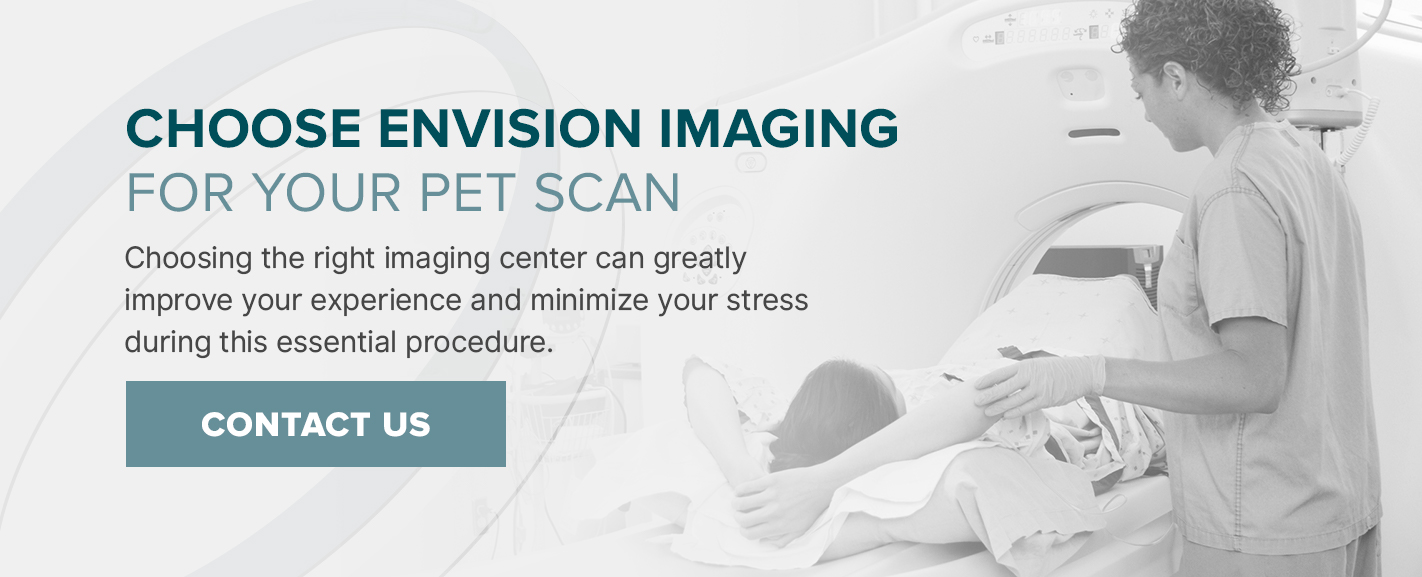How to Prepare for a PET Scan
Positron emission tomography (PET) scans are a type of imaging test your doctor uses to identify possible diseases at the cellular level. The scan allows physicians to evaluate oxygen intake, blood flow and metabolism to create a clearer picture of systemic diseases like cancer, brain disorders and heart problems.
Being recommended for a PET scan can be frightening or stressful, especially if you haven’t had one before. Knowing what to expect with a PET scan and how to prepare can ease your nerves and ensure the process goes smoothly.
Jump to Sections:
What to Do Before Your PET Scan
PET scan preparation begins a few days before the scan. You will receive a complete set of instructions from your doctor letting you know what to do. Frequently, the physician will recommend that you don’t engage in strenuous physical activity for 24 to 48 hours before the test.
PET Scan Prep The Preceding Day
You will need to stick to a specific PET scan preparation diet for 24 hours before your scan. You need to avoid sugar completely and consume as few carbohydrates as possible. This is because the tracer used to create your PET scan image is made from a sugar analog — so other types of sugar in your system would be picked up by the scan and create a false image. Foods to avoid during PET scan prep include:
- Cereals
- Pasta
- Beans
- Fruit and fruit juices
- Honey, desserts and candy
- Starchy vegetables like corn, peas and potatoes
- Smoothies and nutritional shakes
- Bread
- Rice
- Gravy
- Jam and jelly
- Caffeinated beverages
- Yogurt
- Milk, including nondairy milks such as oat, almond or soy milk
- Alcohol
This list is not exhaustive, so it’s often more helpful to focus on what you can eat instead of what you can’t. Stock up on these foods for the 24 hours before your scan:
- Meat and poultry
- Hard cheese
- Non-starchy vegetables like spinach, green beans and broccoli
- Nuts
- Eggs
- Tofu
- Margarine, butter and oil
If you have diabetes, it’s important to talk to your doctor about the diet adjustments and your medication. Keeping blood sugar under control for 48 hours before the scan is essential for obtaining accurate results. You should also inform your doctor of any supplements or over-the-counter medications you take.
Six Hours Before Your PET Scan
Six hours before your PET scan, you’ll need to stop eating and drink only water to prepare for your exam. Drinking water is encouraged and can help make your results clearer, so consider carrying a water bottle with you to maximize your intake. If you have diabetes, you can take your medication up to four hours before the exam.
You will be asked to change into medical scrubs or a hospital gown and remove any jewelry as metal can interfere with the equipment used for testing. Medical devices like artificial hips or pacemakers will not affect your results.
What to Do During the PET Scan
On the day of your PET scan, all you need to do is follow instructions and relax. One to two hours before the scan, you’ll receive an injection containing a tracer dose of radioactive material that will be picked up by the scan. The tracer is a radioisotope similar to glucose, called fluorodeoxyglucose (FGD). It builds up in malignant cells, showing your physician where issues are in your body. The injection will feel like getting a routine vaccine, with just a pinch where the needle goes in and possible cold sensations in your arm. The tracer will not make you feel any different or cause any pain during the procedure.
You will need to wait at the facility for one to two hours so your body can absorb the tracer, and you should rest quietly during this period. Before the scan, you will have the opportunity to ask your technologist any questions you may have about the procedure.
It is rare but possible to have an allergic reaction to the tracer. You are more likely to have an allergic reaction if you have:
- Allergies
- Asthma
- Blood cell disorders
- Dehydration
- Heart or kidney disease
- A drug regimen including beta-blockers or nonsteroidal anti-inflammatory medications (NSAIDs)
For the scan itself, anticipate a time of about 30 to 45 minutes. You will be instructed to lie flat on a narrow table which will slide out of the circular PET machine. You will need to lie as still as possible and hold your arms above your head to get an accurate picture, and your technologist may ask you to hold your breath for several seconds at a time. There will not be any pain during the procedure, but some people who are afraid of enclosed spaces may feel some anxiety while inside the imaging machine.
The PET machine will make a variety of clicking and buzzing sounds as it rotates around your body, which can sometimes be unnerving for some people. Try to stay relaxed and breathe slowly through the procedure. When the images have been completely recorded, you’ll be brought slowly out of the machine, and your scan will be finished.
What to Do After the PET Scan
Once your scan is complete, you’re free to go about business as usual unless your doctor has specific instructions for you. Although the radioactive tracer dose is very small, you should still avoid contact with pregnant women and infants for 12 hours after your test just as a precaution.
To help flush the tracer out of your system, drink a good amount of water and other hydrating fluids. Most people eliminate all tracers after two days.
In the days following your PET scan, a specialist will evaluate the images and share their interpretation with your doctor. The images generated by a PET scan create bright spots that show where chemical activity is higher, providing the radiologist with information about the level of function in your organs and body tissues.
Usually, you will not have to wait more than two business days for your doctor to receive the information, and you will discuss your results at your next appointment.
Choose Envision Imaging for Your PET Scan
By following your doctor’s instructions for PET scan preparation, you can improve the clarity of your results, and your doctor can gain important insights about your condition. Choosing the right imaging center can greatly improve your experience and minimize your stress during this essential procedure.
Envision Imaging is committed to creating a safe, hospitable environment for all patients undergoing imaging tests, including PET scans. Our compassionate approach includes a dedication to accurate image quality and improving your physician’s workflow by quickly delivering your results via electronic medical record (EMR).
Browse our locations to request your next diagnostic imaging appointment. Our world-class facilities, compassionate care and accurate results ensure a pleasant and reliable experience.
Sources:
- https://stanfordhealthcare.org/medical-tests/p/pet-scan/what-to-expect.html
- https://www.envrad.com/locations/




